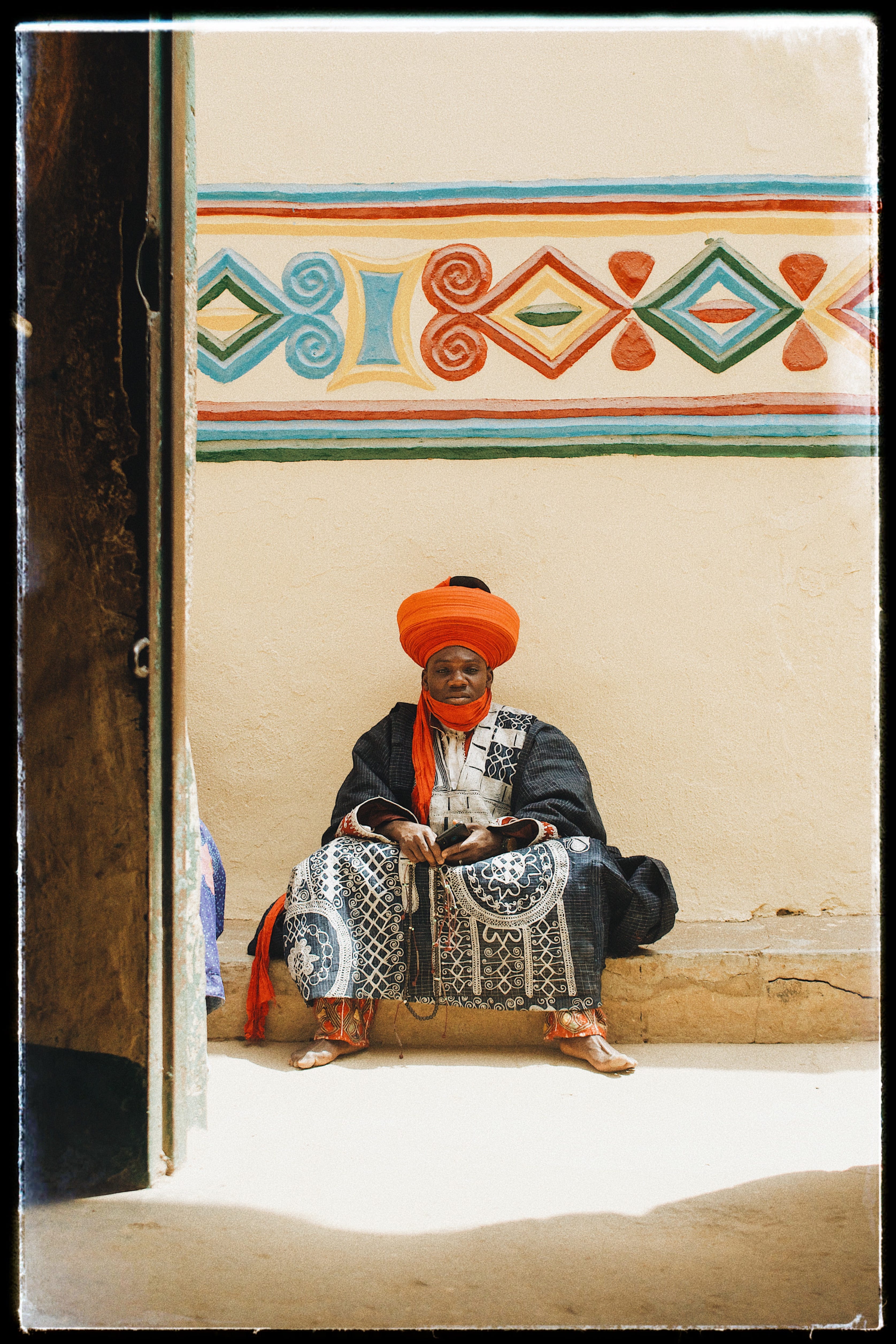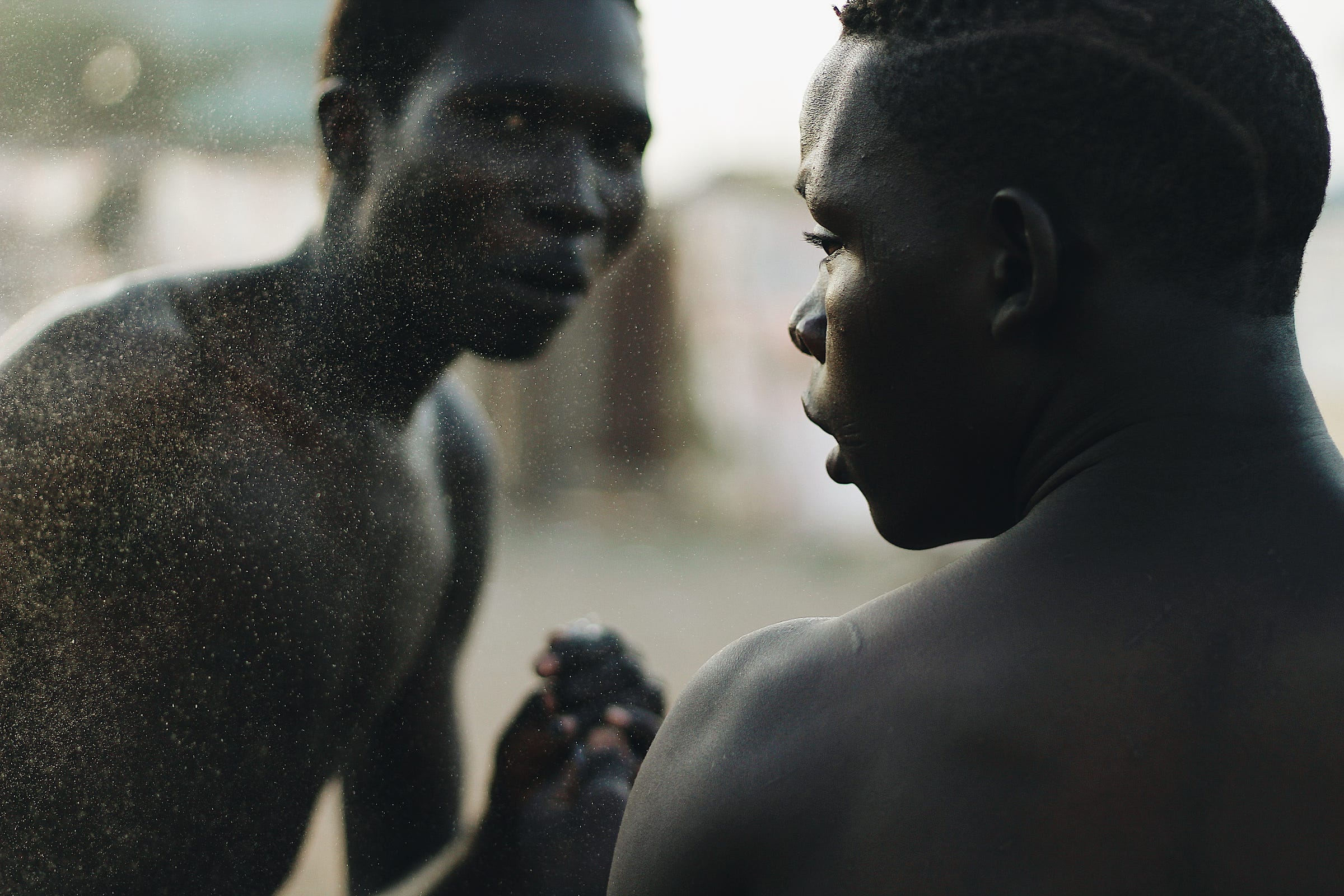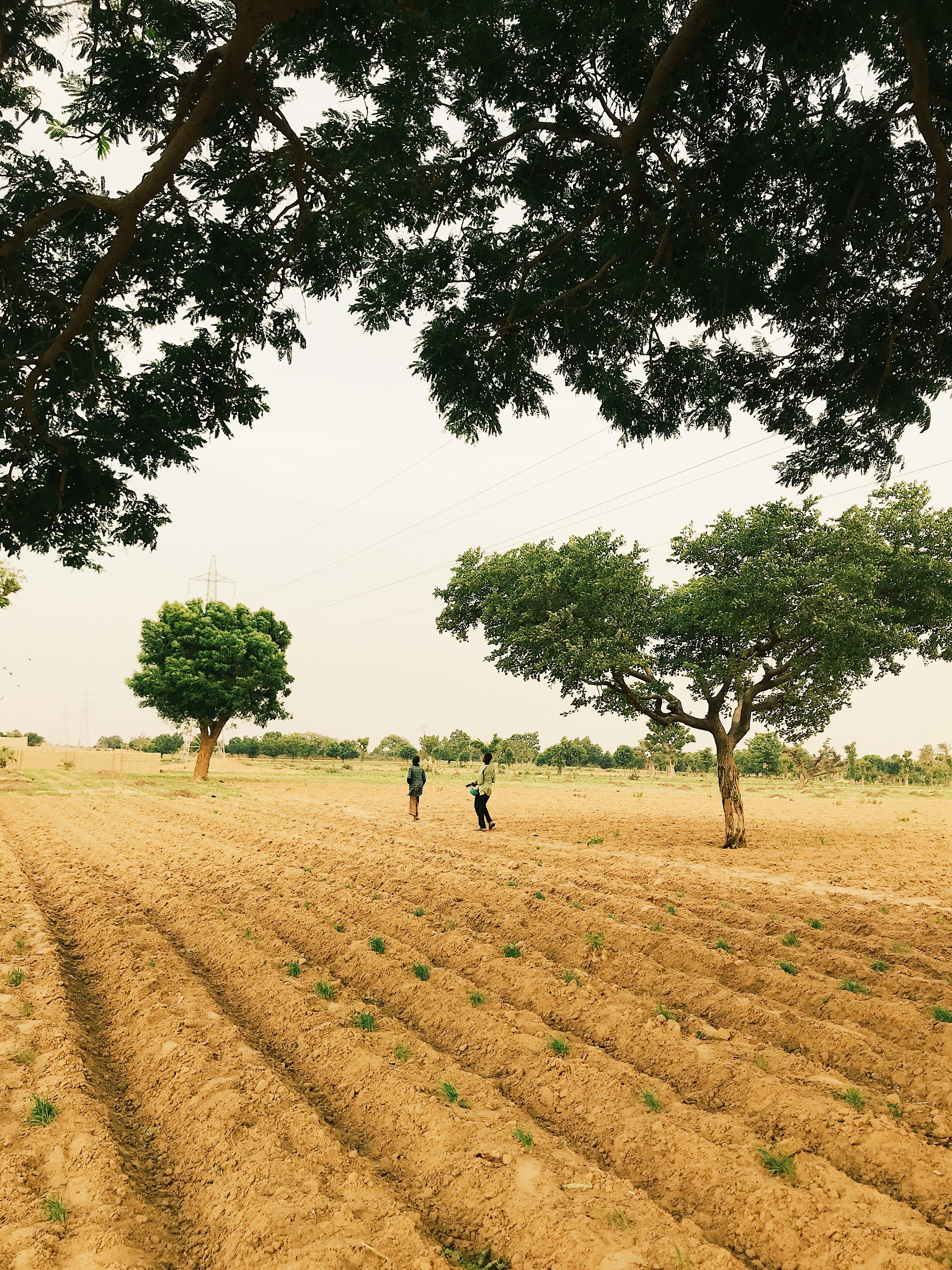The light is a borderline, separating a sitting, barefoot man from the other side of a door. He is posed as though he has only a fraction of time for the photograph, as though even if genial he is not completely welcoming of the interruption. Yet his pose—the spread of his legs, tautness of his turban, the fix of his glare—tell also of what is appreciable about the encounter he’s having with the photographer. In the hint of a garment beside his, it is equally clear the photograph is a selection of sorts, a moment made from many. And above him, in the cream-coloured wall, a criss-cross of symbols are arrayed, their meanings fixed or historic, tell-tales for an age to come.
Abdullahi Ahmad: “My approach to photography has always been one of curiosity.”
The picture was taken at the Emir Palace in Zaria, Kaduna State, Nigeria.
When I approached the subject, I began with greetings, followed by a few jokes, and then I asked if I could take a picture of him because I liked his clothes, which he confidently agreed to.
The day I took the photographs, I forgot my camera batteries at home, which I didn't realize until I was about to begin photographing. My friend had to lend me some battery packs. I doubt I'll be able to take those photographs without the assistance of my friend. This, I believe, is why the image is special to me.
My approach to photography has always been one of curiosity and the desire to preserve beautiful elements of cultural significance for future generations to come.
Photography is an artistic tool whose purpose is to create memories and images that can be used to tell stories in various forms. While the average person may see it as nothing more than holding a camera and pressing the shutter, this form of art has had far-reaching effects in our daily lives that we may not have noticed.
Storytelling in photography aids in the creation of awareness, the shaping of narratives, the countering of narratives, and the documentation of people and events for future reference.
Photography aids in the shaping of perspectives, particularly from an objective standpoint.
And lastly—which I believe is the most important because I can relate to it—is that photography can be used as a form of therapy. It has been shown to help people suffering from anxiety and depression.
Two other photographs by Abdullahi Ahmad
For each week’s feature, I send 3 photographs to the photographer, and ask them to respond to one. Here are the 2 other photographs I selected from Abdullahi’s portfolio and sent to him. What do you think about any of them? You can respond as a comment below.
Last Week: Rahima Gambo
“My approach to photography is quite open-ended, conceptual, trans-media and philosophical. I think of photography as a fluid continuum between still and moving image. I think of photography as a long process that begins before one picks up the camera and continues on long after one puts the camera down. I think a lot about my body and it’s interiority, during the act of photography, notions of subjectivity and the agency of the subject. I see the space between myself and my subject as a place to pause, dwell, explore and grapple with, uncomfortably.”
Read “Crossing a River.”
Thank you for reading and sharing this feature on Abdullahi Ahmad. You can see more of his work on Instagram.
Every week I feature one photograph and the photographer who took it. You’ll read a short caption from me, and a statement from the photographer. My goal is to set up conversations with the work of early to mid-career African photographers. You can support the newsletter by asking anyone—or 10 people!—interested in the impact and meanings of photography to subscribe.








These are all really beautiful. I love what the sand is doing in the photo of the two men. and the farm photo, I love the framing with the branches. And the colours. Thank you for your work, Abdullahi and for this newsletter, Emmanuel.